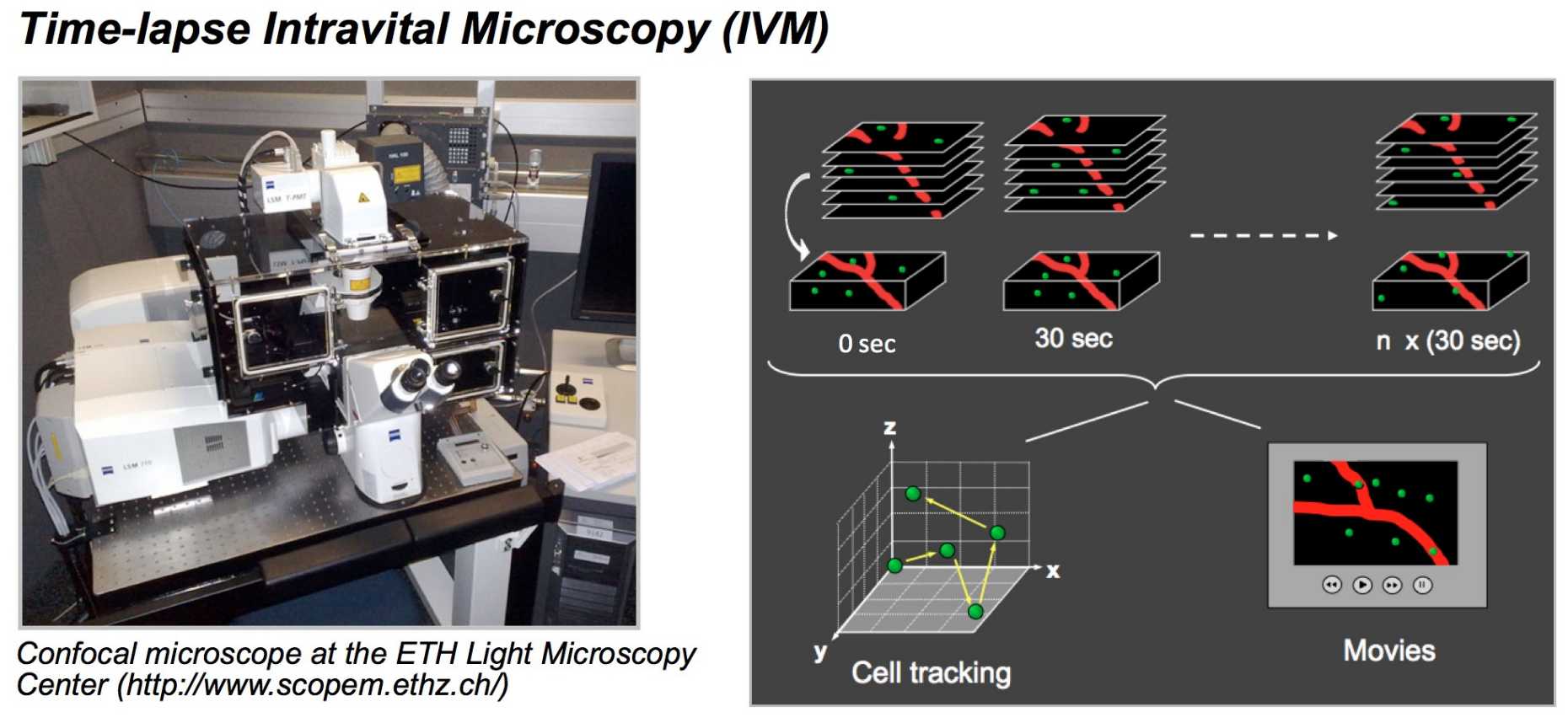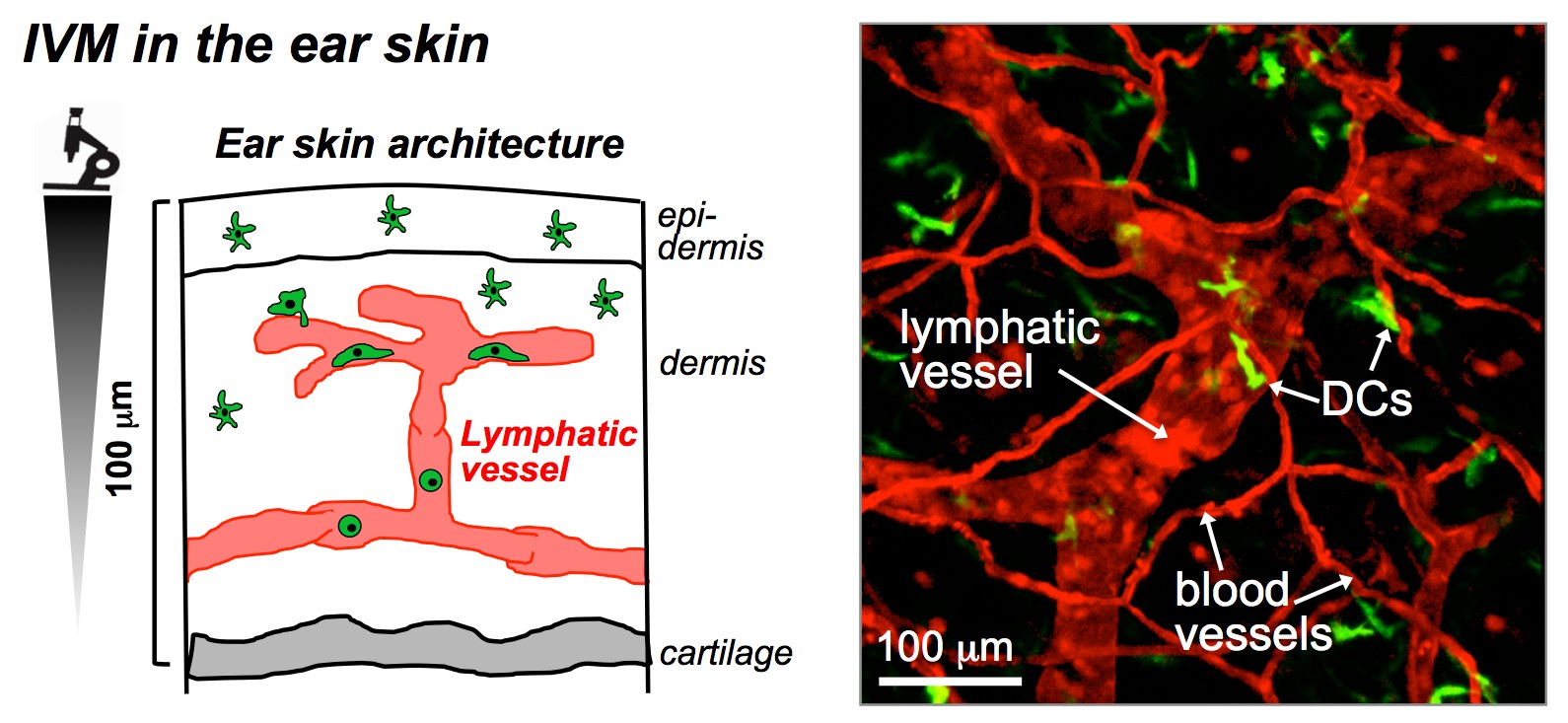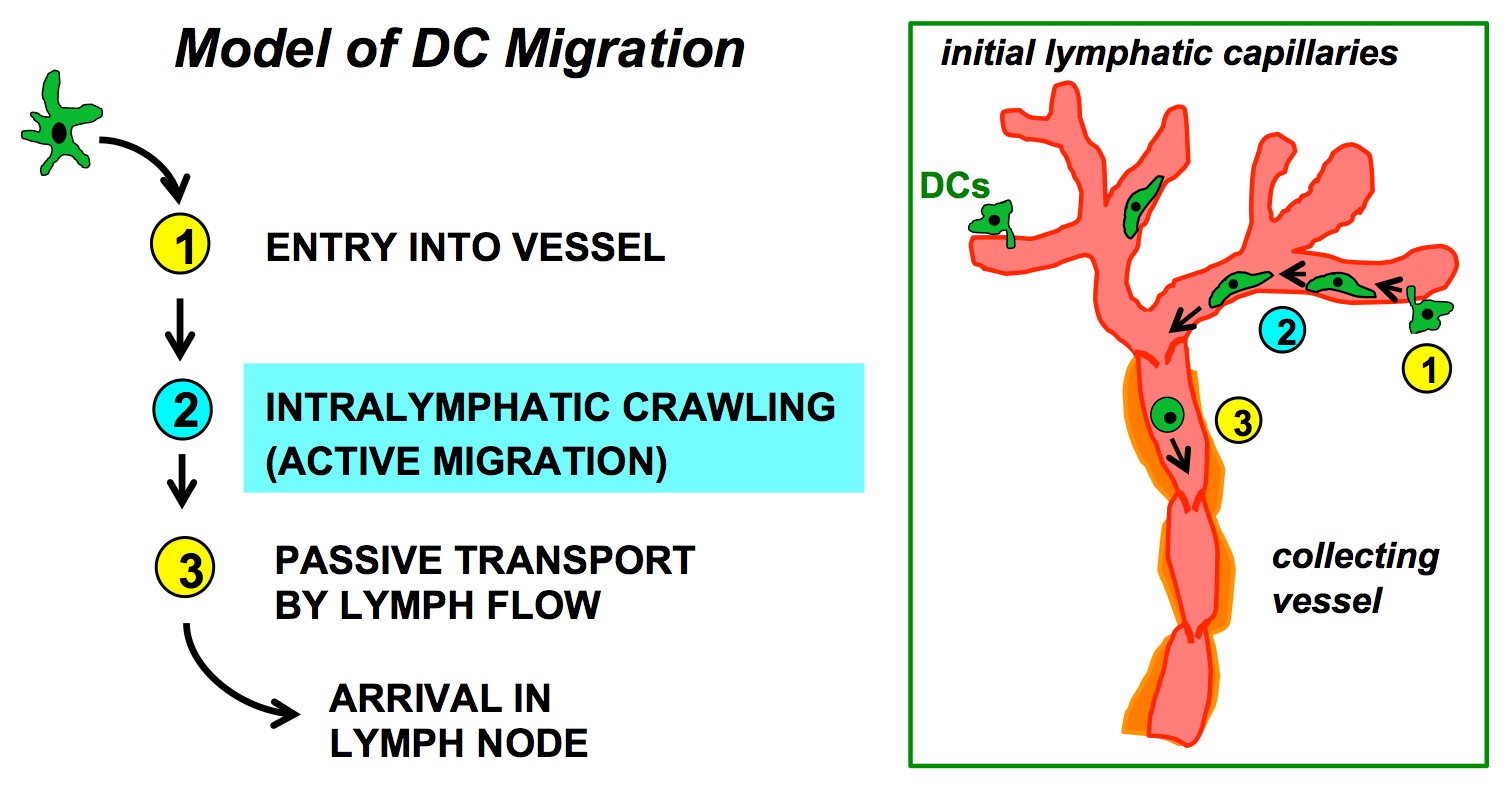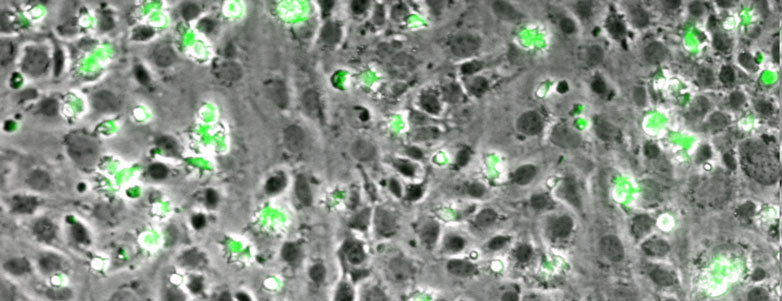Leukocyte migration through lymphatic vessels
In contrast to the migration of leukocytes out of blood vessels into the tissue, the migration of leukocytes from the tissue into lymphatic vessels is less well understood. This, for instance, occurs when antigen-presenting dendritic cells (DCs) migrate from the tissue into draining lymph nodes, during the initiation of an adaptive immune response. We have recently established a mouse model to investigate leukocyte migration into and within lymphatic vessels in the ear skin by intravital microscopy (IVM).
For our experiments we employ transgenic mice expressing a red fluorescent protein in both lymphatic vessels and blood vessels. Lymphatic vessels are easily distinguishable from blood vessels by means of their different morphology (larger as compared to blood vessels, characteristic blind ends).
Using this setup we found that leukocytes actively migrate and patrol within lymphatic capillaries (external pageNitschké et al., Blood 2012 =>call_made and News Feature in ETH Life => ).
In our ongoing work, we are further investigating the molecular mechanisms of intralymphatic leukocyte migration as well as the biologic significance of this process.
Besides intravital microscopy (IVM), we also perform other in vivo experiments to study leukocyte migration to draining lymph nodes at the cell population level. These experiments for example involve the adoptive transfer of fluorescently labeled leukocytes (in presence/ absence of blocking antibodies or small-molecule inhibitors) into the skin and subsequent FACS-based quantification of leukocyte numbers in the draining lymph nodes. In vivo experiments are complemented by in vitro experiments, in which we, for example, analyze leukocyte chemotaxis, study interactions with in vitro-cultured lymphatic endothelial cells or perform in vitro flow chamber assays.




